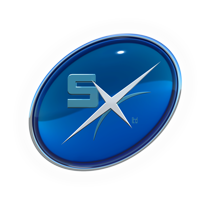Most telescope mounts will not track well for more than one or two minutes and so a guide camera may be a valuable accessory for you. The problem may be overcome by simply taking many short exposures and stacking the results together, but this is not practical at long focal lengths. Some SX cameras permit you to use ‘STAR2000’ guiding, where the CCD image is composed of two successive exposures, one for odd-numbered lines and a second for the even-numbered ones. During these exposures, the other lines are used for guiding the telescope and so you can guide on the object being imaged, without a guide camera being required. This works well, but you will effectively halve the camera sensitivity and so you may not want to make this sacrifice. If this is the case, then the SXV guide camera offers you a good solution. This tiny, but sensitive camera, as small as a 1.25″ eyepiece, connects directly to the main camera for control and will work with any small guide ‘scope or off-axis assembly. In cases where you want to guide another camera, such as a DSLR, then our ‘Lodestar‘ USB2 controlled guider offers you a tiny but powerful option.
If you want to guide at a long focal length, then a simple guide camera may not be enough for good results. In this case, you might consider purchasing one of our AO units for high-speed precision guiding.
